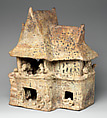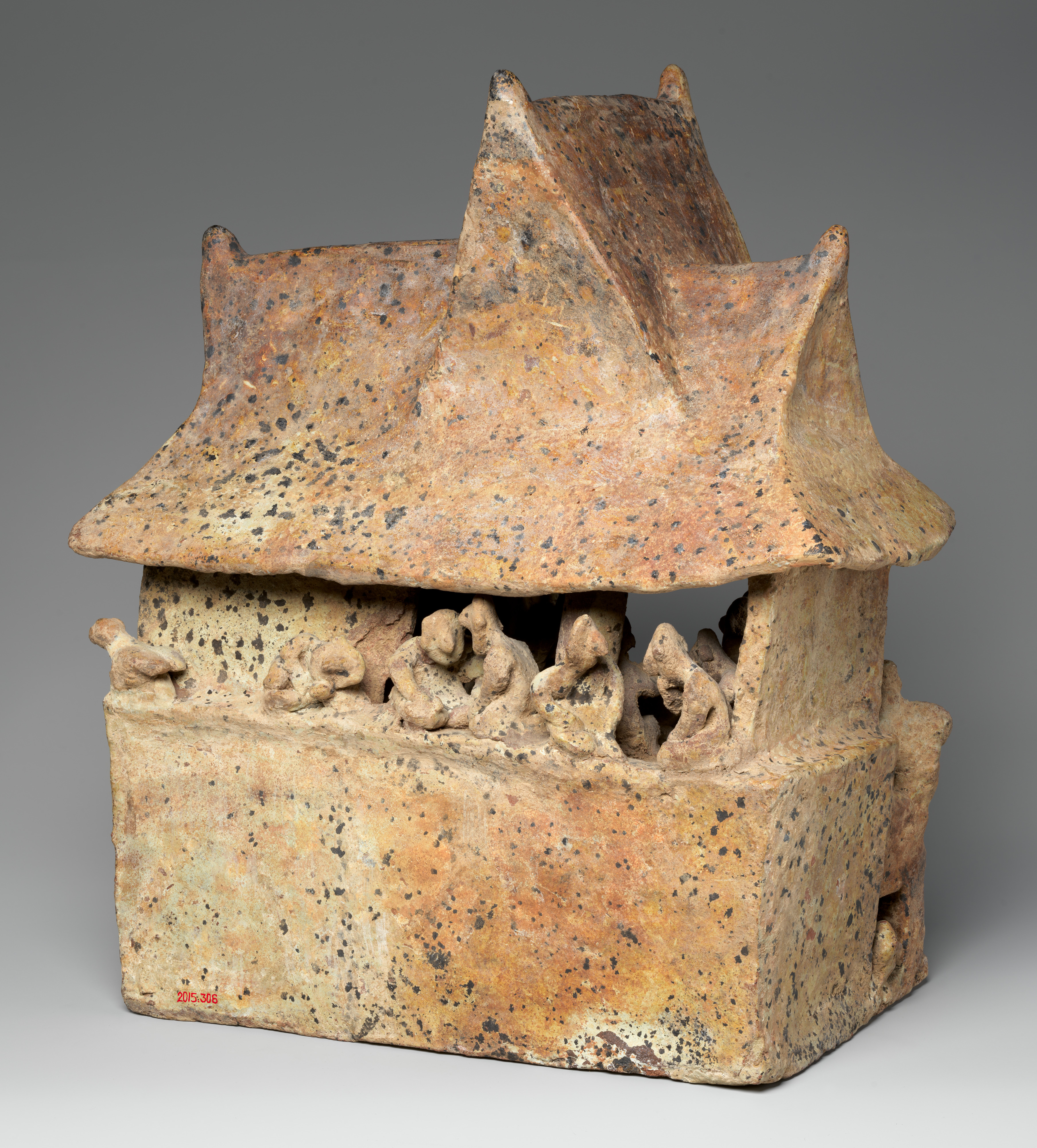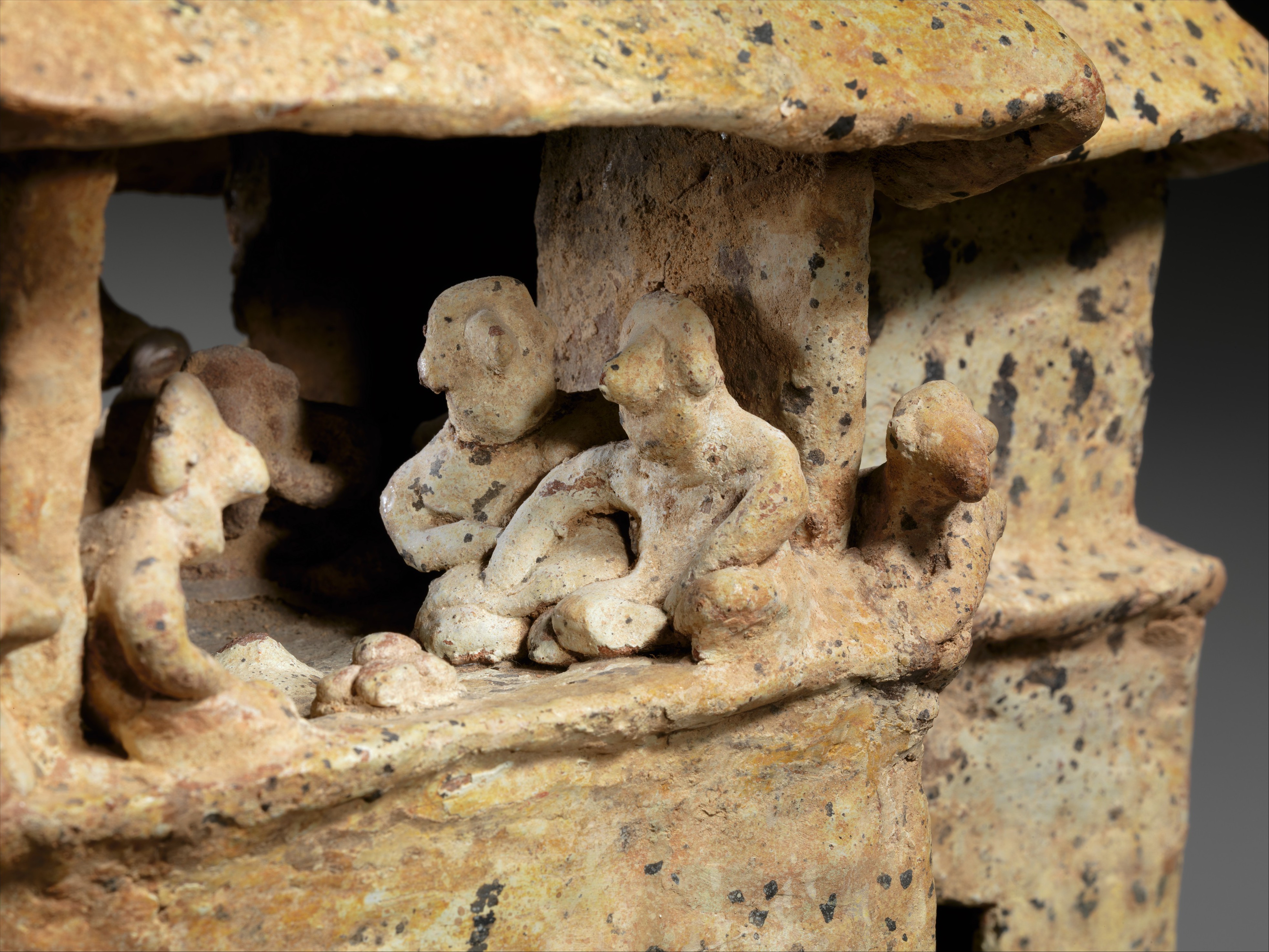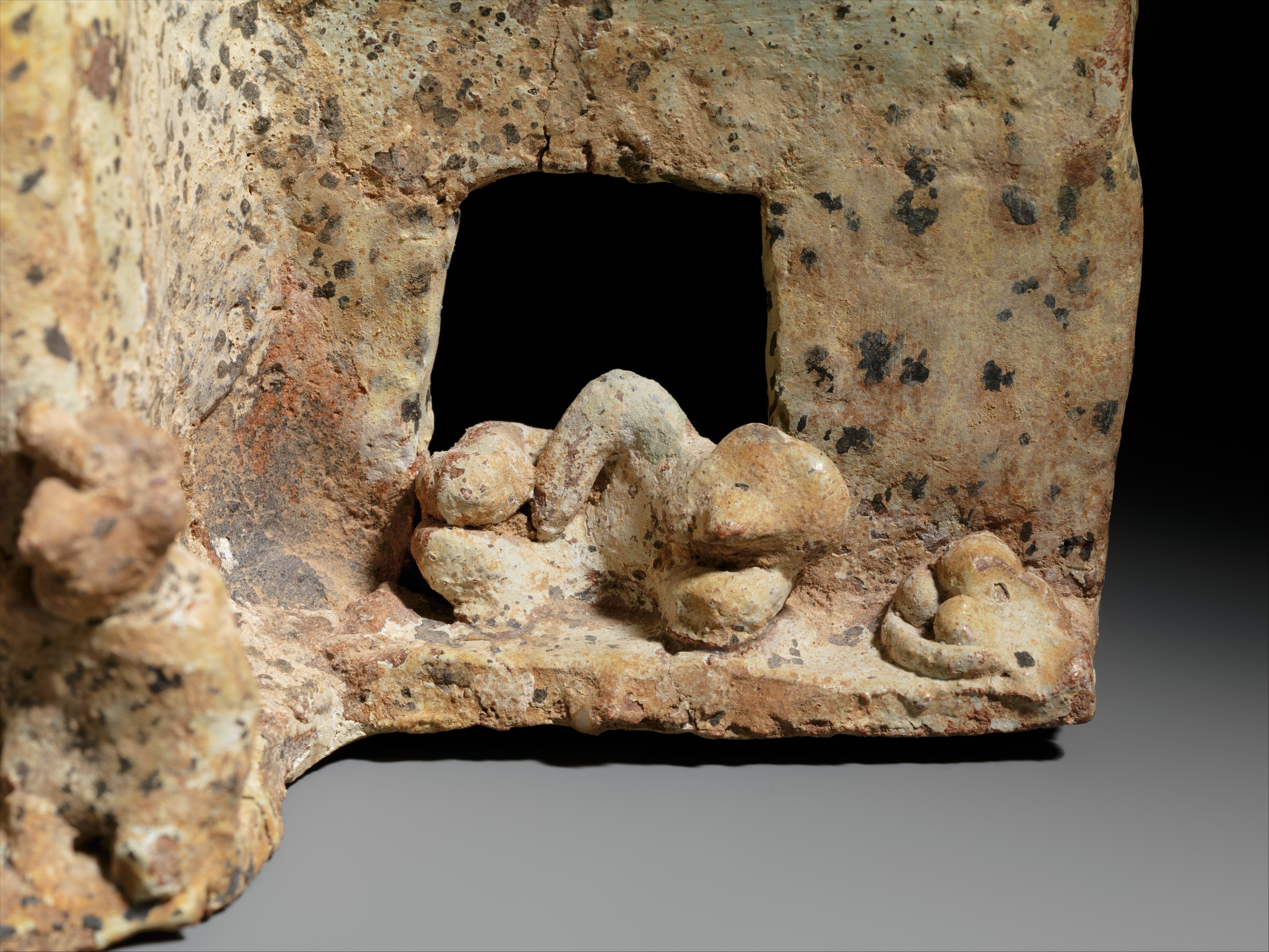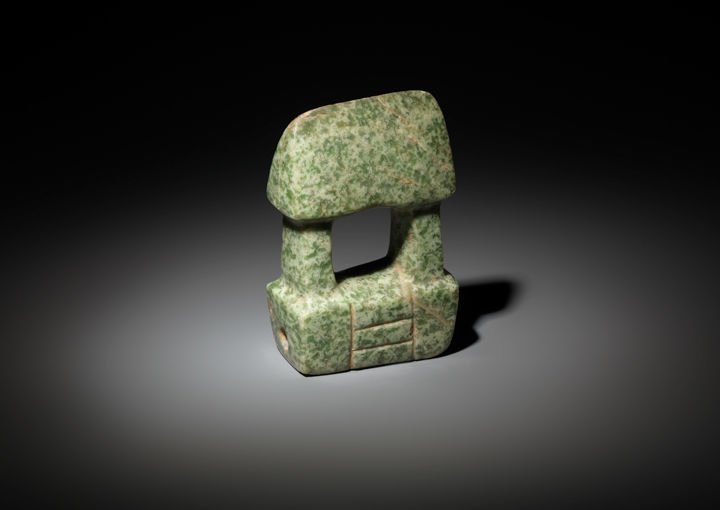House Model
Not on view
House and village models created by the Nayarit peoples depict events central to village life in surprising detail. Scenes of ballgame competitions often include spectators betting on the results, dance rituals are observed by excited villagers (see MMA 1995.63.4), and feasting scenes such as this one illustrate locales, persons, and a range of activities, giving us an intimate view of life in ancient West Mexico. When placed in tombs they both reflect the world of the living and create a world for the dead.
House models also allow us to appreciate the building techniques employed in creating dwellings and other buildings known archaeologically only by their foundations. In this example, two intersecting hipped roofs shelter a portico and an enclosed room, supported by walls a free-standing post. Traces of a black and white diamond pattern decorating the building’s thatched roof and plastered walls can still be seen.
Twenty-seven adults have gathered for a feast. They fill the upper portico and spill out onto the narrow ledge overhanging the lower level and down the stairs. The thirteen figures crowded under the portico roof include six male and female couples. Matched male and female pairs are common in larger, freestanding West Mexican ceramic sculptures, and may represent ancestors or the primordial couple, the origins of humankind and society (see MMA 1999.272.1, 2). Here, one couple, probably the central figures in the gathering, rest against the wall of the enclosed room, the man’s arm lying familiarly over the woman’s lap. They may be the village leaders, seen as the continuation or embodiment of that precious lineage. Several of the men and women are eating, hands held up to their mouths, partaking of the abundant offerings of food. Others lean in toward one another and gesture in animated conversation. A male figure leans against the post, holding a conch shell in his raised right hand. One of the few figures not paired, he may be a musician, and the shell his instrument.
The woman seated on the ledge to the right of the upper room once had a companion, most likely male. She is accompanied now only by one of the birds that flock around the house, waiting for their share of the feast to fall to the ground. A man, seemingly asleep on the ledge, and a woman slumped on the steps, may have enjoyed more than their share. On the lower level three more male figures lie in the same prone position, one partly within a niche below the staircase. Another is outside the entrance to a small room, the remains of his meal on a plate beside him. He obscures a third lying in the room behind him. Such “hidden” elements as this figure, placed before the room’s ceiling and walls were put into place, reveal an important aspect of these models. They reconstruct the world of the living, in order to create one for the dead. It does not matter that the viewer, ancient or modern, cannot see every element; it matters that they are there.
Three figures wearing turban-like headdresses sit outside a large room below the portico. Within, five others sit cross-legged before a plate of food and a large vessel, their hands raised to their mouths in the same eating gesture as those above. The feasts shown in Nayarit models clearly depict important community gatherings, rather than everyday events. On important occasions these would have served to consolidate the community. The models, and their placement in tombs, suggest that the Nayarit believed that similar celebrations took place in the afterlife.
Patricia J. Sarro, 2023
Further reading
Butterwick, Kristi. Heritage of Power: Ancient Sculpture From West Mexico: The Andrall E. Pearson Family Collection. New York, New Haven, London: The Metropolitan Museum of Art, 2004.
Hers, Marie-Areti, ed. Miradas renovadas al occidente indígena de México. Mexico: Universidad Autónoma de México, 2013.
Pillsbury, Joanne, Patricia Joan Sarro, James Doyle, and Juliet Wiersema. Design for Eternity: Architectural Models from the Ancient Americas. New York: The Metropolitan Museum of Art, 2015, pp. 36–37, figs. 35–37.
Schávelzon, Daniel. Treinta siglos de imágenes: Maquetas y representaciones de arquitectura en México y América Central prehispánica. Buenos Aires: Fundación Centro de Estudios para Políticas Públicas Aplicadas, 2004, p. 121.
Townsend, Richard F., ed. Ancient West Mexico: Art and Archaeology of the Unknown Past. Chicago, Art Institute of America, 1998. von Winning, Hasso. Anecdotal Sculpture of Ancient West Mexico. Los Angeles: Ethnic Arts Council of Los Angeles, 1972, no. 28, p. 54.
Due to rights restrictions, this image cannot be enlarged, viewed at full screen, or downloaded.
This artwork is meant to be viewed from right to left. Scroll left to view more.
